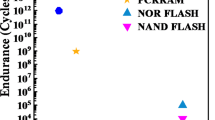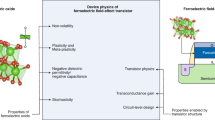Abstract
The ferroelectric memory is not only an ideal memory with clear advantages such as non-volatility, low power consumption, high endurance and high speed writing, but is also the most suitable device for memory embedded applications. Its manufacturing process makes it more compatible with the standard CMOS process than the traditional non-volatile memory process, since it does not require high voltage operation, and the ferroelectric process does not influence the characteristics of the CMOS devices used in logic cells, analog cells and core cells. In the spreading of Intellectual Property (IP) application for the LSI Industry, this embedded application takes on a more important role. In the near future, the ferroelectric memory technology will be taken into reconfigurable devices as programmable interconnect switches besides being used as embedded memories. These ferroelectric memory based reconfigurable devices can be used as Dynamic Programmable Gate Array (DPGA), which are able to be reconfigured from their original logic in a system under an operation mode. New logic circuits will operated with lower power consumption or a resume function by introducing ferroelectric gated transistors or ferroelectric capacitors. Even though ferroelectric memory technology has many advantages, it is not popular yet, since, the conventional semiconductor process degrades the ferroelectric layer easily. The means to prevent degradation of ferroelectric films in the silicon wafer process will also be discussed.
Similar content being viewed by others
References
J.L. Moll and Tarui, Trans. Electron Devices (Solid State Res. Conf. Abs), ED-10, 338 (1963).
S.S. Eaton, D.B. Butler, M. Parris, D.Wilson, and H. McNeillie, Proc. of IEEE International Solid-State Circuits Conference, (1988).
T. Nakamura, Y. Nakao, A. Kamisawa, and H. Takasu, Dig. Tech. Pap. IEEE Int. Solid-State Circuit Conf., 68, (1995).
Y. Fujimori, N. Izumi, T. Nakamura, and A. Kamisawa, Integrated Ferroelectrics, 21, 73 (1996).
T. Mihara, H. Watanabe, C.A. Araujo, J. Cuchiaro, M. Scott, and L.D. McMillan, Proc. of Int. Symp. Integrated Ferroelectric 1992, 137 (1994).
T. Nakamura, Y. Nakao, A. Kamisawa, and H. Takasu, Appl. Phys. Lett., 65, 1522 (1994)
D.J. Wouters, G.J. Norga, F. Beckers, L. Bogaerts, and H.E. Maes, Abst. of 9th Int. Symp. on Integr. Ferroelectrics, 19c (1997).
H. Koike, T. Otsuki, T. Kimura, M. Fukuma, Y. Hayashi, Y. Maejima, and K. Amanuma, Proc. of IEEE Int. Solid-State Circuits Conf., (1996).
K. Kushida-Abdelghafar, H. Miki, K. Torii, and Y. Fujisaki, Appl. Phys. Lett., 69(21), (1996).
Y. Shimamoto, K. Kushida-Abdelghafar, H. Miki, and Y. Fujisaki, Appl. Phys. Lett., 70(23), 3096 (1997).
Author information
Authors and Affiliations
Rights and permissions
About this article
Cite this article
Takasu, H. The Ferroelectric Memory and its Applications. Journal of Electroceramics 4, 327–338 (2000). https://doi.org/10.1023/A:1009910525462
Issue Date:
DOI: https://doi.org/10.1023/A:1009910525462




